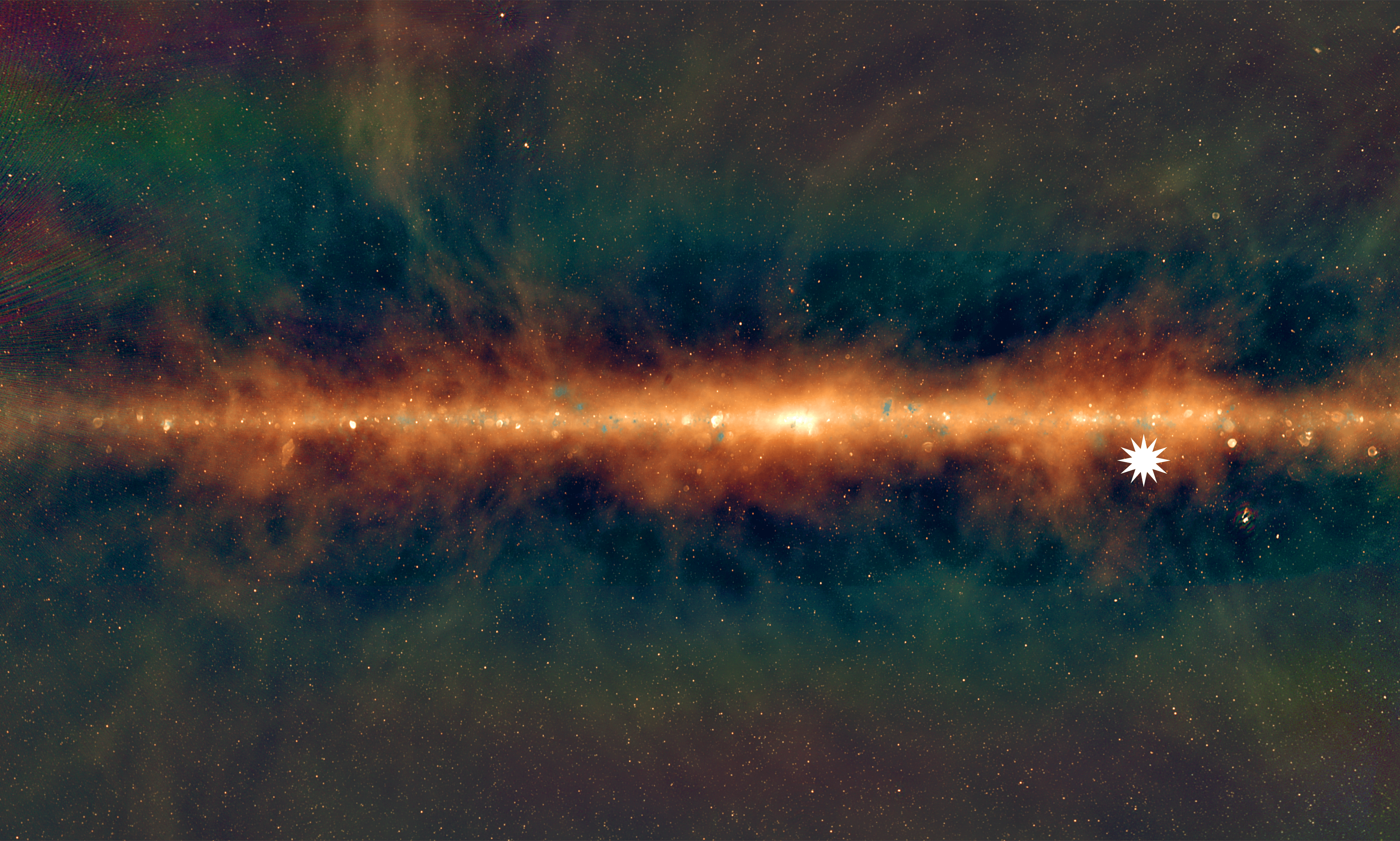Astronomers have spotted a red dwarf star in a system that is almost certainly the source of a radio signal that, for a while, repeated once every 125 minutes. Moreover, there’s evidence of a white dwarf companion. The discovery is a close match for one made last year, and confirms the type of system that creates these signals, although we still don’t understand the details of how.
ADVERTISEMENT
Recent advances in radio telescopes have helped astronomers discover a sort of cosmic radio zoo, setting off a race to discover the causes of these different strange signals. One new class is long-period radio transients (LPRT), pulses that resemble the outputs of pulsars slowed down hundreds or thousands of times. After initial bafflement, one LPRT, GLEAM-X J0704−37, was traced to a red dwarf, almost certainly in conjunction with a white dwarf.
Now, an even clearer case has emerged, suggesting many LPRTs are produced this way. However, Dr Iris de Ruiter, now at the University of Sydney, told IFLScience that the quest is not over. We still don’t fully understand how the stellar pair produces the signal, and de Ruiter doubts a subclass of LPRTs can be explained this way.
Traditional pulsars, produced by neutron stars, produce radio signals so regular we use them as clocks, but they slow down over millennia, getting weaker as they do. Therefore, it is thought impossible for a pulsar to produce a signal with a period of longer than a few minutes that’s powerful enough to be detected.
That made the discovery of something pulsar-like with an 18-minute period a puzzle, and subsequent longer discoveries even more mysterious. The original finds were made near the plane of the galaxy, the most studied part of the sky. de Ruiter explained to IFLScience that a combination of obscuring dust and many stars in the field of view made pinning down the source almost impossible.

The galactic plane, and the location of one LPRT (GLEAM-X) J162759.5-523504.3, showing why it is hard to trace the signal to a specific source against such a busy background.
However, in reviewing archival data from the Low Frequency Array (LOFAR) radio telescope, de Ruiter found a pulse from 2015 in the direction of Ursa Major, far from the galactic plane, which was catchily named ILTJ1101+5521. de Ruiter kept digging and found seven pulses from ILTJ1101+5521, each lasting 30 to 90 seconds, indicating she had an LPRT with a 125-minute period.
Follow-up observations failed to find anything in the radio band, but revealed a red dwarf at the right spot 1,600 light-years away and moving in a 125-minute orbit. The light from the system was also revealing, containing more blue than a typical red dwarf of this size. The team attribute this to a white dwarf so close to the red dwarf, and sufficiently faint, we can’t separate them.
ADVERTISEMENT
de Ruiter and co-authors conclude the red and white dwarfs orbit each other, with a 125-minute period. de Ruiter told IFLScience the pair would be tidally locked, so their rotation rates match their orbits and both always face the same part of the other star.
“It was especially cool to add new pieces to the puzzle,” de Ruiter said in a statement. “We worked with experts from all kinds of astronomical disciplines. With different techniques and observations, we got a little closer to the solution step by step.”
One explanation might be a system with a very elongated orbit that emits a burst of static every time the stars get closest, but de Ruiter told IFLScience that this is very unlikely. Although the team has not been able to measure the eccentricity of the orbit with certainty, de Ruiter said they “think it is very circular, which is usually the case for stars in such tight orbits.” That means the signal was probably continuous, but was sweeping the sky like a lighthouse (or an ordinary pulsar) and only detectable when pointed at us.
The paper reporting the observation was written before the publication of the finding of the red dwarf associated with GLEAM-X J0704−37. de Ruiter told IFLScience that the two seem to be very similar, other than GLEAM-X J0704−37 being more distant, and its finders haven’t observed the blue light that would confirm their suspicion of a white dwarf partner.
ADVERTISEMENT
As to why attempts to retrieve the signal have failed, de Ruiter said there are many possible explanations. “It was only detected with LOFAR, so it might be the emission is only bright at very low radio frequencies,” the researcher told IFLScience. However, de Ruiter acknowledged the team followed up with LOFAR and saw nothing. “Other LPRTs are quite erratic,” she noted.
To understand why, we need to know how the interaction of red and white dwarfs produces such powerful radio emissions, but only rarely. Red dwarfs’ radio signals are orders of magnitude weaker than this, making an unlikely candidate. The authors write: “We conclude that the radio emission originates from the white dwarf or the interaction between the white dwarf and the M dwarf.” They suspect the white dwarf’s magnetic field has synchronized with the mutual orbit, but acknowledge “[t]he exact mechanism that produces the radio emission is unknown.”
Naturally, the team hopes to make follow-up observations of ILTJ1101+5521 at many wavelengths, but they’re also keen to find more examples. de Ruiter told IFLScience, “Initially it was thought LPRTs had something to do with neutron stars, which mostly lie in the galactic plane. White dwarfs are distributed more uniformly, so we can adjust the search strategy.”
de Ruiter also told IFLScience, “Some LPRTs have periods of only 18 minutes. That’s a very short orbital period, so it is likely there are two types.” The researcher thinks what might be called medium-period radio transients probably do involve neutron stars, but the details remain unknown.
ADVERTISEMENT
The study is published in Nature Astronomy.
Source Link: Dancing Dwarf Stars Explain Astronomical Mystery Of Long-Period Radio Transient Signals